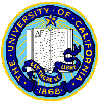 |
Scott Jordan | |
|
|
We are concerned with whether a vertically integrated broadband and content provider can unreasonably advantage itself over competing content providers, either by selling quality-of-service (QoS) to content providers at unreasonably high prices, or by refusing to provide access to QoS to competing content. We address this question by modeling the competition between one such vertically integrated provider and one over-the-top (OTT) content provider. The broadband provider decides whether to deploy QoS, and if so it also determines the QoS price if sold to either the OTT content provider or directly to users. We analytically determine when the broadband provider will sell QoS and when the OTT content provider or users will purchase QoS. We characterize the optimal QoS and video service prices. The Internet service provider (ISP)’s market share increases with the difference in the value of the two video services and decreases with the difference in the corresponding costs. Numerical results illustrate the effect of QoS price on content price, the variation of prices and profit with QoS price, and the variation of prices and market shares with the benefit of QoS. The ISP may sell QoS to users at a lower price than when QoS is sold to the OTT provider.
This paper is intended for people with a background in communications policy:
Can a Vertically Integrated Provider Use QoS to Unreasonably Advantage Itself Over OTT Content Providers? (with W. Dai, J.W. Baek), Research Conference on Communication, Information and Internet Policy (TPRC), Arlington, Virginia, September 2015.
This paper is intended for people with a technical background in networking:
Neutrality between a Vertically Integrated Cable Provider and an Over-the-Top Video Provider (with W. Dai, J.W. Baek), Journal of Communications and Networks, vol. 18 no. 6, December 2016, pp. 962-974.
Portions of this work were supported by NSF. Any opinions, findings, conclusions or recommendations expressed in this material are those of the author(s) and do not necessarily reflect the views of the National Science Foundation or IEEE. This material is presented to ensure timely dissemination of scholarly and technical work. Copyright and all rights therein are retained by authors or by other copyright holders. All persons copying this information are expected to adhere to the terms and constraints invoked by each author's copyright. One print or electronic copy may be made for personal use only. Permission must be obtained from the copyright holder for systematic or multiple reproduction, distribution to multiple locations via electronic or other means, duplication of any material in these papers for a fee or for commercial purposes, modification of the content of these papers, reprinting or republishing of this material for advertising or promotional purposes or for creating new collective works for resale or redistribution to servers or lists, and to reuse any copyrighted component of this work in other works.